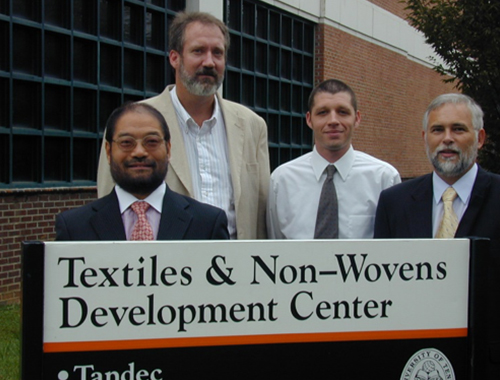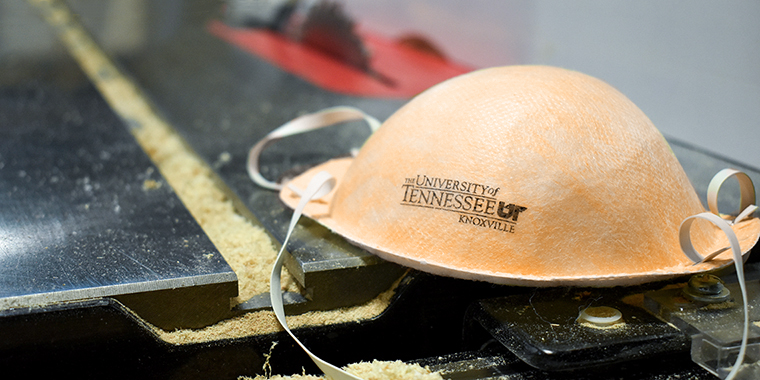Tsai (lower left) and his colleagues
Peter Tsai, a researcher from University of Tennessee, invented a method of corona electrostatic charging which resulted in the creation of N95 mask. The mask has a layer of filter that blocks and contain 95% of submicron particles. The technique involves an electric field to charge non-woven fibers.
The method is widely used in industries over three decades in products such as HVAC filters and medical face masks.
"This respirator was designed for construction workers, and it was designed to be for one-time use," says Tsai in an interview with WYMT.
The mask attracted the attention of Centers for Disease Control and Prevention (CDC). It was found that the filter can capture viruses and bacteria. The filter is then recommended to be used for healthcare workers.
N95 mask from University of Tennessee
According to University of Tennessee, Tsai has 12 US patents and over 20 commercial license agreement, including four licensed to global companies.
"I'm bombarded with questions," says Tsai in an interview with SCMP. "My customers are based around the world. I work around the clock". Demand for face masks has skyrocketed.
Tsai came out of retirement to find a way for the N95 masks to be reused. He provided a report which proposed ways to clean and reuse N95 masks without compromising the electrostatic charge required for particle filtration.
He found out that dry heat of 70 degrees Celcius can decontaminate N95 masks without diminishing particle filtration. The method was validated by National Institutes of Health. An oven can be used to decontaminate N95 masks.


No comments:
Post a Comment